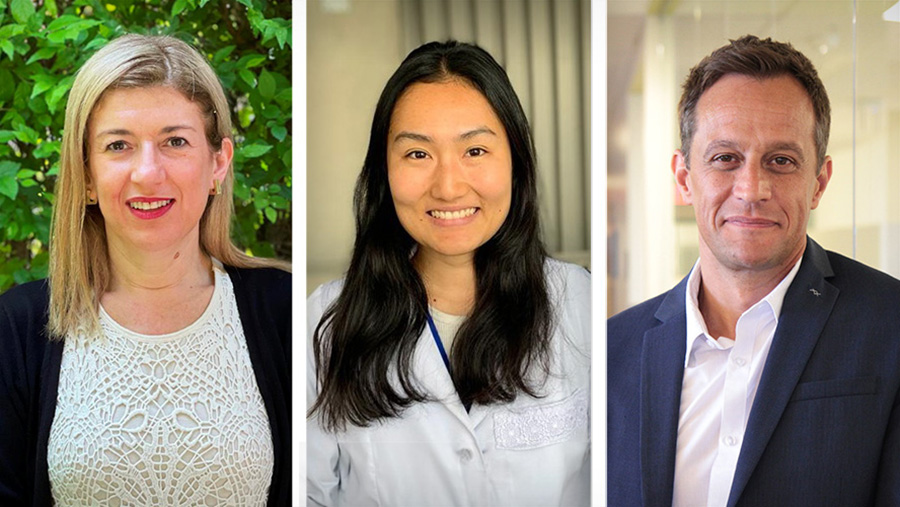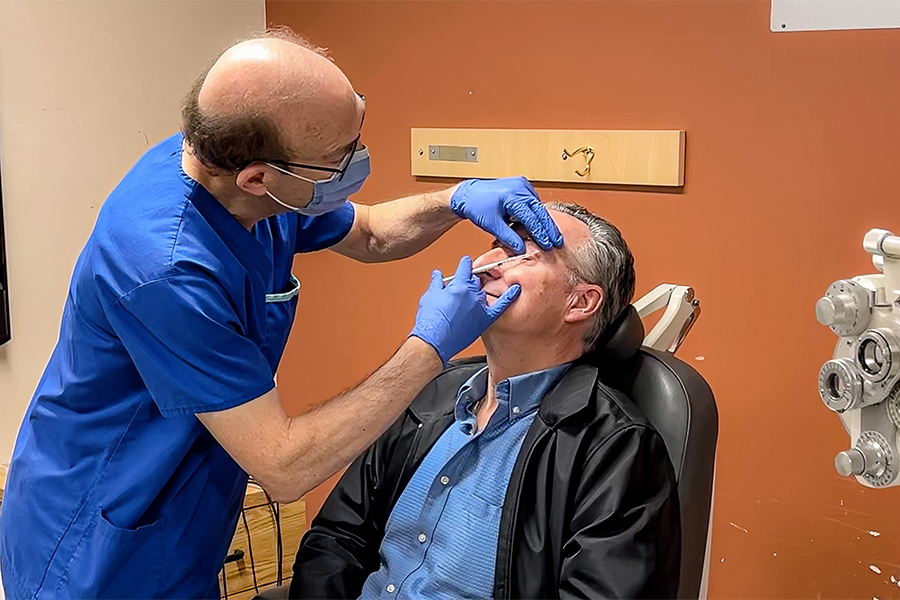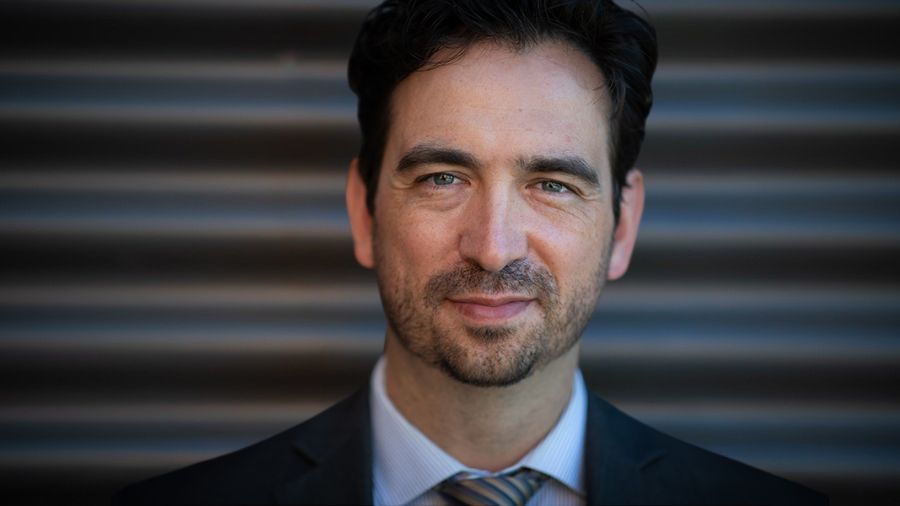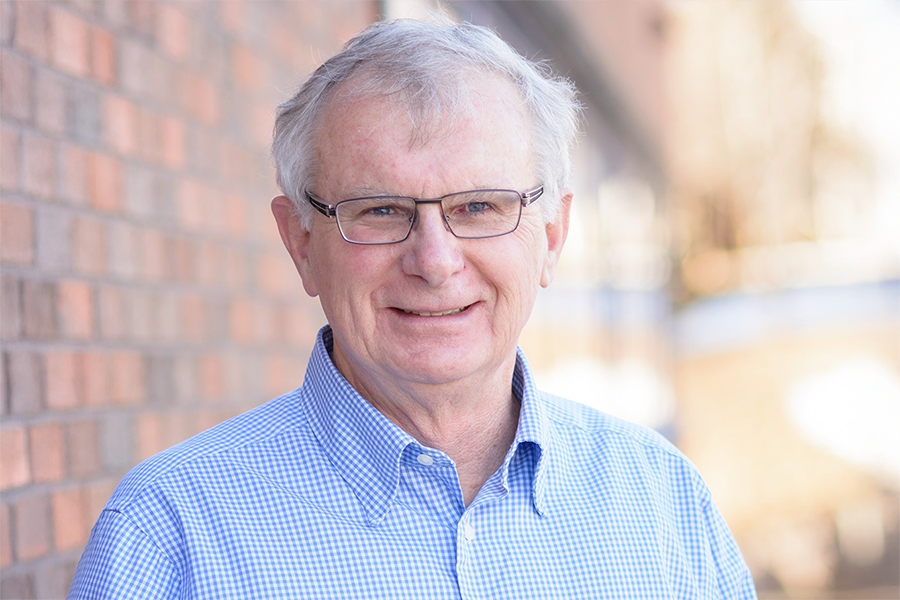
Research from UHN’s Donald K. Johnson Eye Institute has shown for the first time that biofeedback therapy can improve vision in people with homonymous hemianopsia.
Homonymous hemianopsia, or hemianopsia, is a form of vision loss in which a person sees only one side of the visual field from each eye. The condition typically results from a brain injury or tumour that affects the nerves that connect the eyes to the brain’s visual processing centres.
“People with hemianopsia often struggle with daily activities,” says Dr. Michael Reber, Senior Scientist at the Donald K. Johnson Eye Institute. “Their balance, mobility and ability to read are all affected, which significantly impacts their quality of life.
“Unfortunately, there are no standardized vision rehabilitation protocols to help these people,” adds Dr. Reber, who is also an associate professor in the Department of Ophthalmology & Vision Sciences at the University of Toronto (U of T).
Biofeedback training is a rehabilitation technique that improves vision by enhancing eye control and shifting the focus of the visual field. This approach has shown promise for treating various forms of visual impairment.
“Biofeedback therapy is gaining popularity for vision rehabilitation but it has never been used to treat people with hemianopsia,” says Dr. Monica Daibert-Nido, a clinician investigator at Donald K. Johnson Eye Institute. “We see an exciting opportunity to use biofeedback in a novel way to address treatment gaps.”

The study engaged 12 participants who had hemianopsia due to a previous brain injury. For five weeks, these individuals underwent biofeedback training that involved completing computer-assisted tasks.
As participants completed the tasks, feedback was provided in the form of visual and auditory queues.
“Over the study period, participants completed 20-minute training sessions in which they focused on a small red circle on a screen while listening to an intermittent beep,” says Dr. Mariana Misawa, a clinical fellow at UHN and in the Department of Ophthalmology & Vision Sciences at U of T. “Participants had to move their eyes towards a target, guided by changes in the frequency of the beeps.”
After biofeedback training was complete, the team measured participants’ visual function.
“We observed significant improvements, including increased ability to detect contrast and focus on targets – including close objects – and increased reading speed,” says Dr. Misawa. “Participants also felt positive about their progress and improvements in visual performance.”
These findings suggest that biofeedback training can improve vision in individuals with hemianopsia. Next steps for this research include validating the results in larger studies with more participants. Future studies are also needed to determine whether the benefits of this rehabilitation program are long-lasting.
“Our findings suggest that biofeedback training is a low-cost, effective treatment for people with hemianopsia, with the potential to significantly improve independence and quality of life,” concludes Dr. Daibert-Nido, who is also an assistant professor in the Department of Ophthalmology & Vision Sciences at U of T.
This study was supported by generous donors to UHN Foundation.


